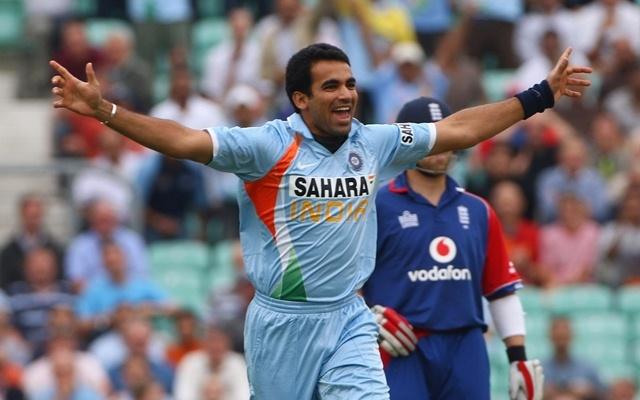Kanpur, UTTAR PRADESH :

Drugs routinely used for treating prostate cancer may actually be worsening the condition
A study shows why drugs used for treating prostate cancer which mainly functions by blocking the activity of androgen receptor signalling or stopping the production of androgen or testosterone is actually counterproductive in the long term. While both methods initially produce encouraging results, the cancer very often returns in a more aggressive form, and becomes resistant to these drugs. With cancer no longer responding to these drugs, it grows unchecked and ultimately causes death.
For the first time, the study sheds light into why the FDA-approved drugs against androgen signalling to treat prostate cancer can backfire after initial success.
Mechanism of return
The study was done by a multi-institutional team led by Bushra Ateeq from the Department of Biological Sciences and Bioengineering at the Indian Institute of Technology (IIT) Kanpur. The team has also found a mechanism by which the cancer growth at aggressive stage can be safely reduced. The results were published in the journal Nature Communications.
Several studies have already shown how stopping the production of androgen or androgen signalling through ‘androgen deprivation therapy’ at some point unintentionally helps the prostate cancer cells to become resistant towards this therapy and progress further to lethal forms. Now, Prof. Ateeq’s team has found the mechanism.
Using mice implanted with prostate cancer tumours, the team found how administering anti-androgen drugs (enzalutamide and apalutamide) results in increase in the expression of a particular gene (SPINK1) which is generally associated with the aggressive type of prostate cancer present in 10-25% of the patients.
“When androgen signalling was inhibited using anti-androgen drugs, an increase in the levels of SPINK1 protein was recorded, which makes the cancer cells more aggressive. The tumours isolated from the mice treated with these drugs exhibit elevated levels of the protein as well as markers for neuroendocrine prostate cancer, which triggers change in cellular plasticity,” says Prof. Ateeq.
Role of SPINK1 protein
“In another set of experiment, we implanted mice with prostate cancer cells with basal levels of SPINK1 protein and we found manifold increase in the protein levels when we administered anti-androgen drugs,” she says. There was also an increase in the levels of neuroendocrine markers which are only found in most aggressive form of prostate cancer. These results reflect a catastrophic situation similar to prostate cancer patients undergoing anti-androgen therapy. Neuroendocrine prostate cancer is an aggressive subtype of prostate cancer which may arise de novo or as a mechanism of resistance due to anti-androgen therapy.
“Our findings emphasise the importance of SPINK1 protein in maintaining neuroendocrine prostate cancer. The results highlight the repercussions of using anti-androgen drugs which are meant to control the prostate cancer but actually aggravate the disease,” says Prof. Ateeq.
Repressor of SPINK1
“Using mouse models, prostate cancer cell lines and patients’ samples we discovered that androgen receptor functions as a repressor of the SPINK1 gene. Using drugs to inhibit the androgen receptor actually results in stopping the repressive activity of the receptor,” says Nishat Manzar from the IIT Kanpur and one of the first authors of the paper. “And this leads to increased level of SPINK1 gene expression.”
“We found the SPINK1 gene is also responsible for maintaining the characteristic features of neuroendocrine prostate cancer. The tumour becomes aggressive when the SPINK1 protein level increases while upon inhibiting the protein a decrease in the neuroendocrine markers was observed,” says Prof. Ateeq.
In addition to androgen receptor, the researchers found that REST, which is a cofactor of androgen receptor, too, has repressive action on SPINK1 gene. “Our study is the first to show the role of the androgen receptor and REST in repressing the SPINK1 gene expression. This was not known so far,” says Prof. Ateeq.
The SPINK1 protein level is high when the amount of REST is low in prostate cancer, and also in the case of neuroendocrine prostate cancer. A particular protein (Casein Kinase 1) is responsible for reducing the level of REST. “When we used an already approved drug to inhibit the activity of Casein Kinase 1 protein, the levels of REST increased,” says Manzar.
Clinical trials needed
And when the REST level increases there is a reduction in the SPINK1 protein level accompanied with a reduction in the oncogene properties of prostate cancer cells. Treating prostate cancer cells showing elevated SPINK1 with a drug against Casein Kinase 1 show reduced cancer cell growth as well as aggressiveness.
“We need to conduct clinical trials using Casein Kinase 1 inhibitor to investigate whether it can reverse neuroendocrine prostate cancer and reduce SPINK1 in prostate cancer patients,” Prof. Ateeq says.
“Our study warns about the possible adverse effect of androgen-deprivation therapies, and the benefits must be considered against treatment, before putting the patients on this therapy.”
source: http://www.thehindu.com / The Hindu / Home> Sci-Tech> Science / by R. Prasad / January 25th, 2020






















